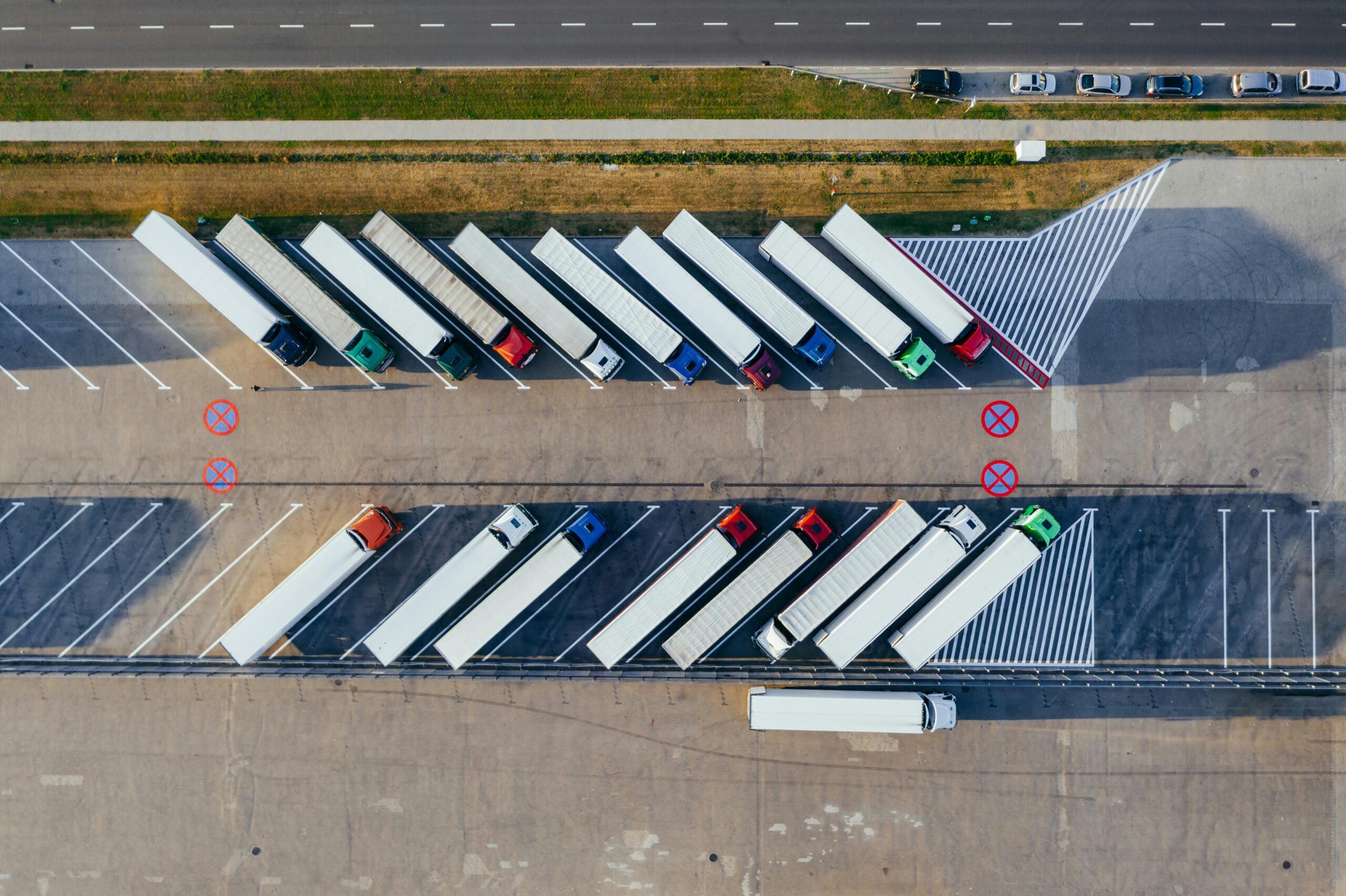

Supply chains have become the backbone of almost every business. Whether it’s getting raw materials delivered, moving finished goods to stores, or syncing information with partners and vendors, supply chains are all about smooth coordination. But with more digital tools being used to manage operations, the risks of supply chain breaches have also grown.
One supplier gets hacked—and suddenly your entire operation is on hold.
That’s how supply chain cyberattacks work. They don’t just hit the company with weak security. They hit everyone connected to it. Orders don’t ship. Systems go offline. Customers don’t wait.
From 2021 to 2023, cyberattacks on supply chains jumped 431%. And they’re not slowing down. This isn’t just an IT problem anymore. It’s a business problem—one that can cost millions, damage trust, and bring everything to a stop if you’re not ready. This guide breaks down what’s happening, where the weak points are, and what smart businesses are doing to stay ahead of it.
Why Cybersecurity Matters in Logistics and Supply Chain Operations
Let’s start with the obvious — supply chains rely heavily on digital systems. From warehouse software to transportation tracking, almost everything is connected through networks, platforms, and often third-party tools. That also means there are many ways for attackers to get in.
When a breach happens in logistics, it doesn’t just delay a few orders. It can stop shipments, expose sensitive data, create huge legal headaches, damage your relationships with vendors or customers — and worst of all, cost your business real money.
According to Cybercrime Magazine, the global annual cost of software supply chain attacks is expected to hit $60 billion by 2025. And it won’t stop there — damages could reach $138 billion by 2031, growing at 15% every year.
Those numbers aren’t theoretical. If your business depends on any digital system or third-party vendor, you’re part of that risk pool.
Understanding Where Your Supply Chain is Vulnerable to Breaches
To fix anything, you need to first know where it can break. Most supply chains today have multiple points where cyber threats can sneak in:
1. Third-party software and vendors
You might trust your systems. But do you know how secure your vendor’s software is?
There’s been a 180% increase in breaches initiated through third-party vulnerabilities in 2023 compared to 2022. That’s a big jump — and a reminder that any software, platform, or supplier you rely on can become your weakest link.
In fact, 15% of all supply chain breaches in 2023 involved a third party or supplier.
2. Open-source software
Open-source tools can be great. They’re free, flexible, and widely used in supply chain applications. But that also makes them a target.
In 2023, more than 245,000 malicious attacks were aimed at open-source software in supply chains. That’s a nearly 280% increase from the previous year. If your business uses any open-source tools, even indirectly, make sure you know what’s under the hood.
3. Data sharing between partners
Many supply chains involve exchanging files, orders, tracking info, and billing data between companies. These exchanges — if not protected — become a doorway for hackers.
The average number of supply chain breaches rose by 26% between 2022 and 2023. That means it’s no longer rare — it’s happening to more businesses, more often.
4. Phishing and insider supply chain breaches threats
Even the best security systems can’t stop someone from clicking a bad link. Phishing remains one of the top attack methods, especially in sectors like education, transportation, and utilities.
In Australia alone, over 11% of cybersecurity incidents involved critical infrastructure industries — and phishing was the most common tactic used.
How to Strengthen your Supply Chain Security
Now that we’ve looked at where the threats come from, let’s talk about what you can do.
Securing your supply chain doesn’t mean making it perfect — it means making it harder for attackers to cause real damage. Here are some practical steps:
1. Know Who You’re Working With
Run thorough background checks before onboarding any vendor, especially those who’ll have access to your systems. Ask about their security practices, certifications, and whether they regularly update their software.
Build contracts that require vendors to follow security protocols. That way, you’re not just hoping they’re doing the right thing — you’re holding them accountable.
2. Limit Access
Not everyone needs access to everything. Segment your systems so that users — including partners or suppliers — only see the information they need. This reduces the chance of damage if someone’s account is compromised.
For example, your warehouse team doesn’t need direct access to financial records. And your suppliers shouldn’t have access to internal employee databases.
3. Encrypt Sensitive Data
This one’s straightforward. If your logistics system stores or sends customer information, invoices, or pricing details — it needs to be encrypted, both when stored and when shared.
This protects you if your data ever gets intercepted or stolen.
4. Audit Your Software Regularly
Many supply chain breaches happen because of outdated systems. Make sure all your software is up to date — including tools used by your partners.
If a third-party platform is no longer supported, consider replacing it. Outdated software often becomes a favorite target for attackers.
5. Train Your Team
Cybersecurity isn’t just about tech. It’s also about people. Your staff should know how to spot suspicious emails, report issues quickly, and avoid common traps like phishing.
Regular training — even just once or twice a year — can go a long way.
Staying Compliant and Avoiding Legal Risk of Supply Chain Breaches
With cyberattacks rising, regulators have started cracking down on businesses that don’t protect their data.
In the UK, for example, the Financial Conduct Authority has issued warnings urging companies — especially in the financial industry — to prepare better for tech-related crises. These warnings followed major disruptions caused by cyber incidents tied to third-party platforms.
Regulations are only getting stricter. If your supply chain handles customer data, cross-border shipping, or digital payments, there’s a good chance you’re subject to regional or industry-specific rules.
Failing to meet those standards can lead to heavy fines and even lawsuits.
To stay on the safe side:
- Work with a cybersecurity consultant who understands your industry.
- Keep written documentation of your security protocols.
- Review compliance policies with your legal team regularly.
- Ensure third-party partners meet your compliance standards too.
The Cost of Ignoring the Problem
Let’s look at the financial side.
In 2023 alone, supply chain-related disruptions led to an average of $82 million in annual losses per organization across industries like healthcare, defense, finance, and energy.
And it’s not just about big companies.
Small and mid-sized supply chain businesses — especially those without dedicated IT teams — are increasingly becoming soft targets. Attacks don’t have to be sophisticated to cause damage. Something as simple as a stolen password can shut down operations for days.
The bottom line: investing in security is a lot cheaper than cleaning up after a breach.
AI: A New Kind of Threat
While companies are using AI to improve their supply chain efficiency, attackers are using it too — and faster.
A recent survey found that 80% of bank cybersecurity leaders said they can’t keep up with the speed and sophistication of AI-powered cybercrime. These tools can automate attacks, bypass basic protections, and even mimic human behavior to fool employees.
This isn’t a future threat. It’s happening right now. AI can write convincing phishing emails, probe for weak points faster, and adapt in real time.
That’s why traditional defenses are no longer enough. Businesses need to be proactive and think ahead — not just react when something goes wrong.
Real-Life Examples: When Cyber Threats Hit the Supply Chain
Let’s look at a few well-known incidents where supply chain security went wrong, and what we can learn from them.
Case 1: 3CX Supply Chain Attack (March 2023)
In March 2023, 3CX, a company known for its voice and video chat app used across various industries, experienced one of the significant supply chain breaches. Hackers managed to compromise the company’s software, embedding malicious code into both Mac OS and Microsoft installers. This malware acted as a Trojan horse, infecting users’ devices during the installation process. The attackers deployed an infostealer through a malicious payload that connected to a command-and-control server under their control. This breach had the potential to impact hundreds of thousands of users worldwide, highlighting the extensive reach and severity of supply chain attacks. The incident underscored the critical need for robust security measures in software development and distribution processes.
Case 2: Airbus Supply Chain Attack (January 2023)
In January 2023, Airbus, a leading aerospace company, fell victim to a supply chain attack. The breach occurred through a compromised employee account at Turkish Airlines, one of Airbus’s customers. The threat actor, identified as “USDoD,” exploited this access to infiltrate Airbus’s systems. This incident highlighted the vulnerabilities that can arise from interconnected supply chains and the importance of securing all access points, including those of customers and partners.
Case 3: MOVEit Supply Chain Attack (June 2023)
In June 2023, the MOVEit Transfer software, widely used for secure file transfers, was compromised in a supply chain attack. Attackers exploited a zero-day vulnerability, allowing them to gain unauthorized access to the systems of numerous organizations using the software. This breach affected a wide range of industries, leading to significant data theft and operational disruptions. The MOVEit attack underscored the critical importance of promptly addressing software vulnerabilities and maintaining rigorous security protocols.
What To Do Next?
If you’re reading this and realizing your supply chain security could use some work, that’s a good thing. You don’t have to do everything at once — but doing nothing is not an option anymore.
Here’s a short action list to help you get started:
- Review all third-party software and vendors
- Run a cybersecurity risk audit
- Encrypt all sensitive logistics data
- Set clear access controls for staff and partners
- Train your team on phishing and data security
- Document your compliance policies
- Budget for regular updates and security checks
Even taking a few of these steps will reduce your supply chain breaches risk and help your team prepare for the kind of attacks that are becoming more common — and more damaging — every year.
Partnering with Contguard: Keeping Your Supply Chain on Track
Contguard helps you stay one step ahead of supply chain breaches by giving real-time visibility into every shipment, from start to finish. Their smart tracking and security tools alert you to threats before they turn into disruptions. Whether it’s unauthorized access, delays, or temperature issues, you get instant updates so you can act fast. By partnering with Contguard, you reduce risks, avoid costly downtime, and keep your supply chain moving without unnecessary surprises. It’s a practical way to strengthen your operations, protect your cargo, and make sure your deliveries arrive safely—every time.
Conclusion
Supply chain security isn’t a tech upgrade — it’s a business survival move. The risks are real, the costs are rising, and preparation is your best defense. Take it seriously now, and you’ll avoid bigger problems later.
Image credits: Photo by Marcin Jozwiak: https://www.pexels.com/photo/aerial-photography-of-trucks-parked-2800121/


